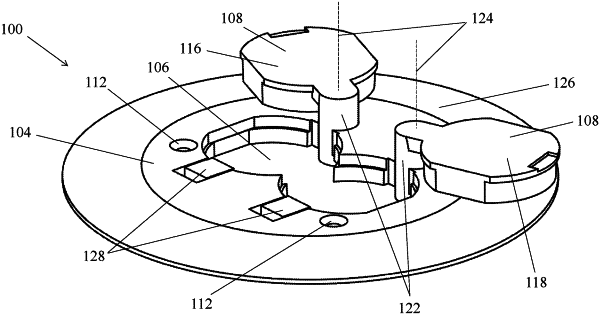| CPC H02G 3/081 (2013.01) [H02G 3/14 (2013.01)] | 20 Claims |

|
1. A horizontal surface cover for a horizontal electrical outlet, comprising:
a cover plate configured to attach to an electrical box and cover an electrical device within the electrical box;
at least one opening extending through the cover plate and sized to allow access to the electrical device through the at least one opening;
at least one access door sized and shaped to fit within the at least one opening, the at least one access door comprising a first access door and a second access door, the first access door having a first hinge with a first hinge axis perpendicular to the cover plate and the second access door having a second hinge with a second hinge axis perpendicular to the cover plate; and
at least one latch configured to lock the at least one access door in the closed position, wherein the at least one latch is configured to move with respect to the cover plate between a locked position and an unlocked position;
wherein the first access door is configured to translate along the first hinge axis between a closed position and an intermediate position and rotate about the first hinge axis between the intermediate position and an open position;
wherein the second access door is configured to translate along the second hinge axis between a closed position and an intermediate position and rotate about the second hinge axis between the intermediate position and an open position; and
wherein when the at least one access door is in the closed position, the at least one access door is aligned with and inside of the at least one opening, when the at least one access door is in the intermediate position, the at least one access door is aligned with but outside of the at least one opening, and when the at least one access door is in the open position, the at least one access door is misaligned with the at least one opening.
|